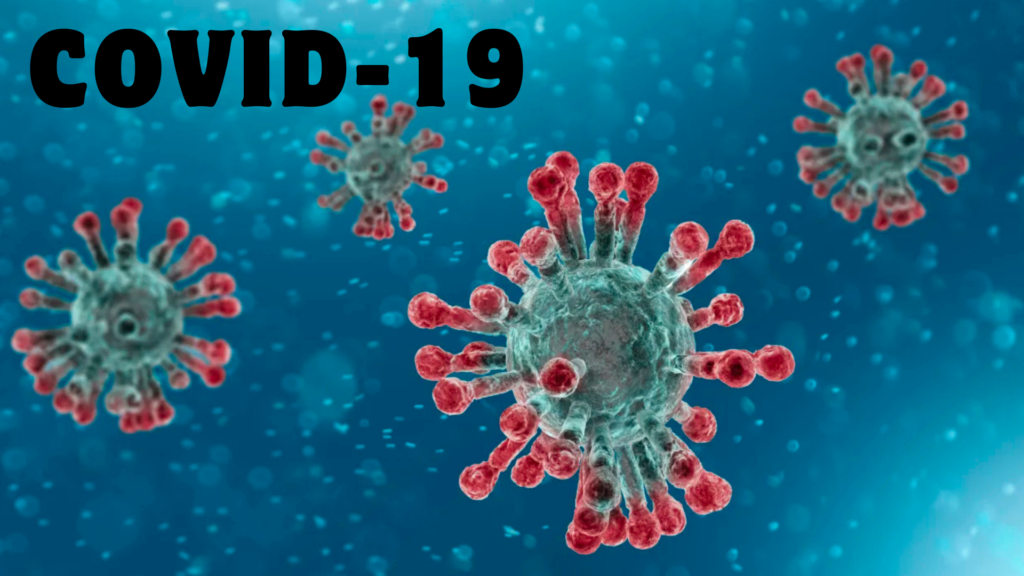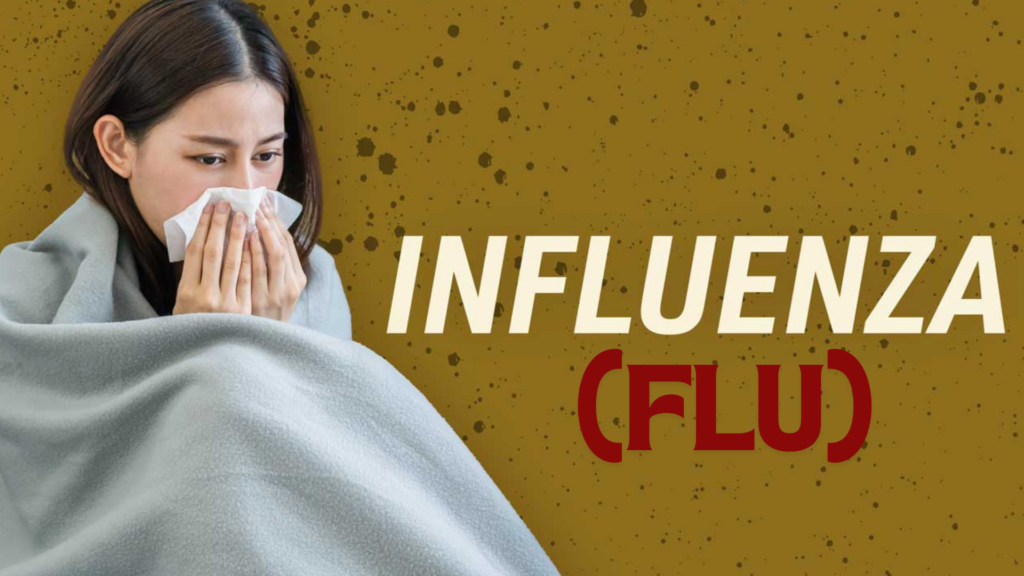Hey People! COVID-19 and flu definitions: The complexities of COVID-19 and new flu strains persist halfway through 2023. As we approach 2024, COVID-19 and Flu remain health threats.
Whether one is experiencing flu like symptoms or is interested in understanding the differences between Covid and flu, this is important to know. In this article, we will discuss major signs of COVID-19 and flu, latest methods of getting a test, measures to take with the viral infections in 2024.
Let’s begin.
Table of Contents
What is COVID-19?

COVID-19 is an illness caused by the SARS-CoV-2 virus, which was discovered in December of 2019. It has since mutated to become a world health threat and has led to the death of millions of people around the world.
Omicron variants of COVID-19 still present in 2024, and new subvariants arise from time to time. COVID–19 initially targets the respiratory system only but infects other vital organs like the heart and kidneys. It can lead to severe disease, especially if taken by patients who have complications, such as the elderly, AIDS patients, and those with chronic diseases.
What is Influenza (Flu)?

The flu is an infectious illness specific to the influenza virus, and occurs every winter and at the beginning of the fall season. Like COVID-19, it is a viral illness endemic that mainly spreads through droplets and impacts the upper respiratory system.
Flu is less fatal compared to COVID-19 but is still a major reason for sickness and admission to the hospital, especially frequent in children, the elderly, and immunocompromised individuals.
Similarities between both include how they are transmitted (through respiratory droplets) and signs and symptoms, including fever, cough, and fatigue. However, there is a sharp difference between COVID-19 and flu that can assist in distinguishing the two, especially when it comes to severity and symptoms.
Comparison of the Main Features of COVID-19 and Influenza in 2024
COVID-19 Symptoms
COVID-19 has many forms, ranging from individuals with no symptoms at all to those who struggle for breath with respiratory problems. The most common symptoms of COVID-19 in 2024 include:
Fever or Chills: Fever is frequent but may not manifest in a patient who develops COVID-19.
Cough: Cough may be a persistent dry cough.
Fatigue: It is common to hear of people who are extremely exhausted, a state that could take several weeks to wear off.
Shortness of Breath: Shortness of breath is always a characteristic sign of COVID-19, especially in severe cases.
Loss of Taste or Smell: This sign has been reported often with COVID-19, and even though some variants, especially the current ones, are not as prevalent as the earlier ones, they are characterised by this symptom.
Sore Throat: A sore throat can be expected, though it is normally not as bad as the flu.
Headache: Headaches are also common among the patients and are described as being severe.
Muscle or Body Aches: Like in the flu, muscles are also sore, and there is a general body ache.
Gastrointestinal Issues: A few people feel sick, vomit, or have diarrhea, although these effects are less common in younger patients.
Flu Symptoms
Influenza symptoms may begin abruptly and are usually severe in the initial 48 hours of the disease. The typical symptoms of the flu include:
Fever: A high fever, measured above 101°F or 38.3°C, is usually noticed within the first 1-3 days of a cold.
Cough: Like with COVID-19, a dry cough can manifest in the early stages of the Influenza and the Flu.
Fatigue: Fatigue is severe and may persist for two to five days.
Sore Throat: One of the early signs you encounter is when you develop a sore throat.
Headache: A headache is a symptom of flu, and it is usually severe and coupled with body pain.
Body Aches: Muscle and joint pains are so familiar and often bring so much discomfort.
Chills: Most people with the flu report feelings of coolness or chills that accompany the high fever.
Nasal Congestion: Colds are usually characterized by a running nose, and nasal congestion is slightly more prevalent in flu than in COVID-19.
Gastrointestinal Symptoms: Although not very frequent, nausea, vomiting, and diarrhoea may be observed more frequently in children.
Main Differences Between Symptoms of COVID-19 and the Flu
COVID-19: Indeed, one of the symptoms associated with COVID-19 is shortness of breath, especially in worsening cases. It is also more likely to cause loss of taste and smell, a symptom not normally seen in flu. Further, COVID-19 viral fatigue is worse than the influenza virus and may continue even after recovery.
Flu is more dangerous since this illness is characterized by sudden onset of fever, chills, and body aches. In flu infections, symptoms such as blocked nose and throat irritation are hardly ever seen in COVID-19 cases.
The following video explains about Comparison of COVID-19 and Influenza:
COVID vs Flu: Testing Tips for 2024
Because the symptoms of COVID vs Flu are very similar in many cases, the only sure way to differentiate them is to test. By 2024,, various testing possibilities will exist for both viruses.
COVID-19 Testing Options
PCR Tests: PCR tests are still the best test for diagnosing COVID-19 to date. They are very reliable and identify the virus’s genetic profile. PCR tests are usually done in laboratories and may take 1-2 days for the results to be released.
Rapid Antigen Tests: These tests identify that the presence of antigens on the outside of the virus is exposed. They are much faster, taking about 15-30 minutes to produce results. Although more portable and quicker than PCR, antigen tests have drawback positives; they may yield false negatives if you’re asymptomatic or early-stage infectee.
At-Home Tests: As mentioned earlier, many people today are going for private Colombia COVID-19 tests. These tests are mainly rapid antigens and usually OTC products. Even though these tests are more easily available, they are not as effective as PCR tests. In case one gets a negative result but does not feel well, it is appropriate to go for a PCR test.
Combo Tests: New variants of PCR tests are multiplex, meaning they can simultaneously test for COVID-19 and flu, for instance. These tests are most beneficial when symptoms are similar because they clarify for a doctor whether it is one virus or both.
Flu Testing Options
Rapid Flu Tests: RIDTs are common, and test results are obtainable within 15-30 minutes of executing the test. These tests can easily identify flu viruses in nasal or throat swab samples. However, they are less accurate than PCR tests, and a person can test negative only to become positive later.
Flu PCR Tests: The gold method for diagnosing influenza is the PCR test, which is deployed when the results have to be precise. PCR or polymerase chain reaction tests remain commonly used to identify flu cases because they can identify and distinguish between different virus strains. Outcomes usually include data that may take 1-2 days to produce.
Combination Tests: With the flu and COVID-19 spreading across the nation, some clinics have developed what is referred to as the dual PCR, a single test that identifies both viruses. The following may be particularly useful when distinguishing between the two diseases where the signs are similar.
Which Test Should You Choose?
For simple symptoms and where speed is of the essence, look at COVID-19 rapid antigen test or flu test. Nevertheless, if you get a negative result and your symptoms are not gone, you should take a PCR test to confirm your case.
If you have a pre-existing condition or are immuno-compromised, a PCR test for COVID and flu is recommended. More recently, there have been far more precise tests that have been useful for making differential diagnoses and determining treatment plans.
Ways of Avoiding COVID-19 and the Flu by the Year 2024
However, it is not only possible to identify the symptoms and get a test to determine if you have COVID or the flu; there are other precautionary measures you can take to avoid the contraction of both COVID and the flu.
1. Vaccination
Flu Vaccine: Everyone should get an annual flu shot, although the more susceptible individuals include young children, the elderly, and those with other underlying health issues. The flu vaccine is harmless, and its effects drive down the severity of illness and likelihood of spreading flu.
COVID-19 Vaccine: The COVID-19 vaccine remains instrumental in guarding its recipients against severe illness and death. In 2024, new booster releases are for newer strains that may circulate in the future. You can also keep COVID-19 away from your community by getting vaccinated.
2. Good Hygiene Practices
Use soap and water to wash your hands for at least 20 seconds during the day.
Wash your hands with soap and water for at least twenty seconds when accessible. Otherwise, you can use a hand sanitizer with at least 60% alcohol.
Do not touch your face, specifically the eyes, nose, or mouth areas of your face.
3. Masking and Social Distancing
In any setting where people are likely to congregate indoors or where contact with individuals in healthcare facilities is likely, masks are advised to prevent the spread of COVID-19 and flu viruses.
Private contact should still be avoided where there is a high infection rate within the community. Where possible maintain social distancing and avoid close contact with other people at least 6ft.
4. Stay Home When Sick
If you are sick, you should not go to work or school to prevent the virus from passing to other people. Rest, hydrate,
Conclusion
Knowing what is different between the coronavirus and the flu is more important as everyone continues to go through 2024 in terms of managing symptoms, testing, and preventing the outbreak.
While COVID-19 and flu cause many of the same symptoms, days or weeks apart are subtle, and having no/touch with COVID-19 and influenza may develop rapidly.
Confirmation of either virus can only be done through a test, and while vaccination remains key, good hygiene is essential in preventing the spread of both viruses. Be up to date, vaccinate, and use test opportunities to protect oneself and others.
FAQ
1. What are the main differences between Covid 19 and the flu?
Coronavirus may result in shortness of breath and loss of taste or smell abilities, while flu has a rapid onset of fever and sore throat.
2. Prime signs include fever, cough, sore throat, headache, fatigue, muscle or joint pain, and loss of smell and taste, but flu symptoms are often more severe than COVID-19, affecting the lungs and respiratory system.
The only way to know for sure is to get tested, though. Many COVID-19 sufferers lose their sense of taste or smell and struggle to breathe, but this is not as immediate as the flu, which hits suddenly and includes body aches and fever.
3. Is it possible to be infected with both COVID-19 and the flu simultaneously?
It is possible to contract both viruses at once, and fluorine was coined for that combination. Both can be made through combination tests.
4. Which one is the best test for COVID-19 or flu?
PCR tests are the most accurate in diagnosing COVID-19 and flu, compared to rapid antigen tests, which are equally fast but less accurate.
5. Should I take a COVID shot and a flu shot?
Of course, to avoid the two viruses, it is preferable to receive both the COVID-19 vaccine and the annual Flu vaccine.




